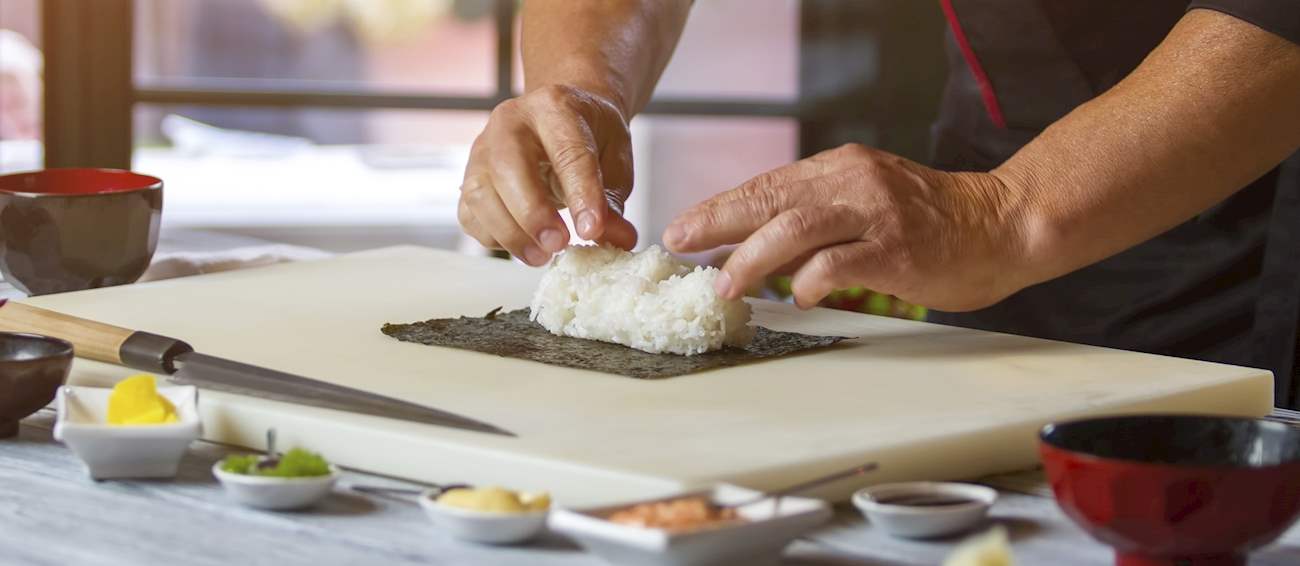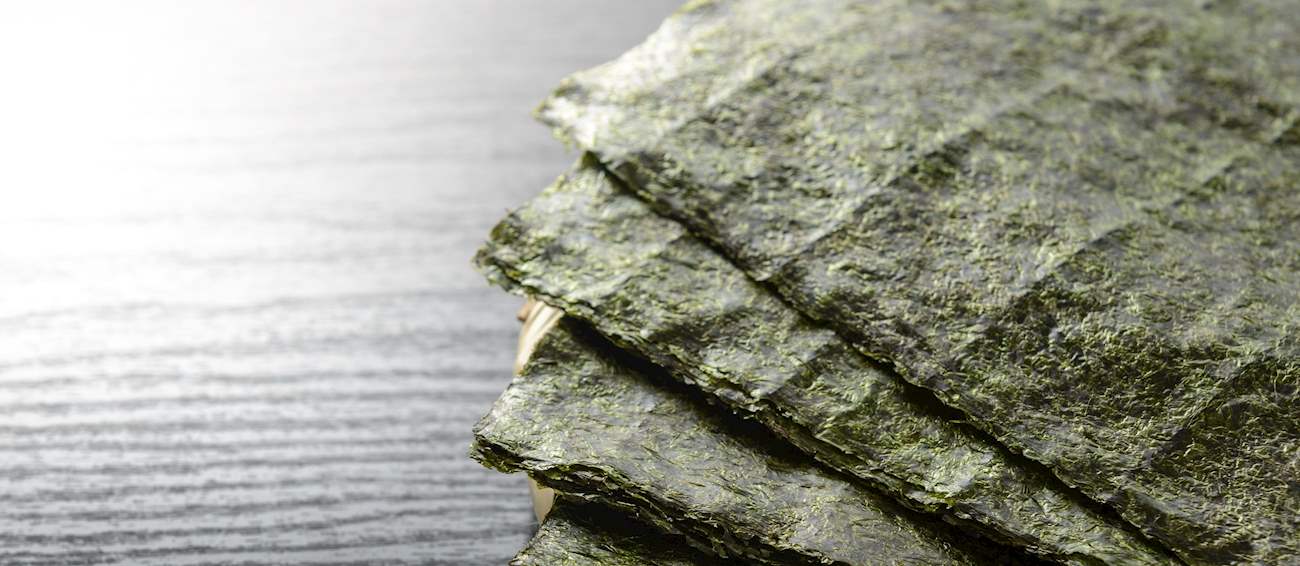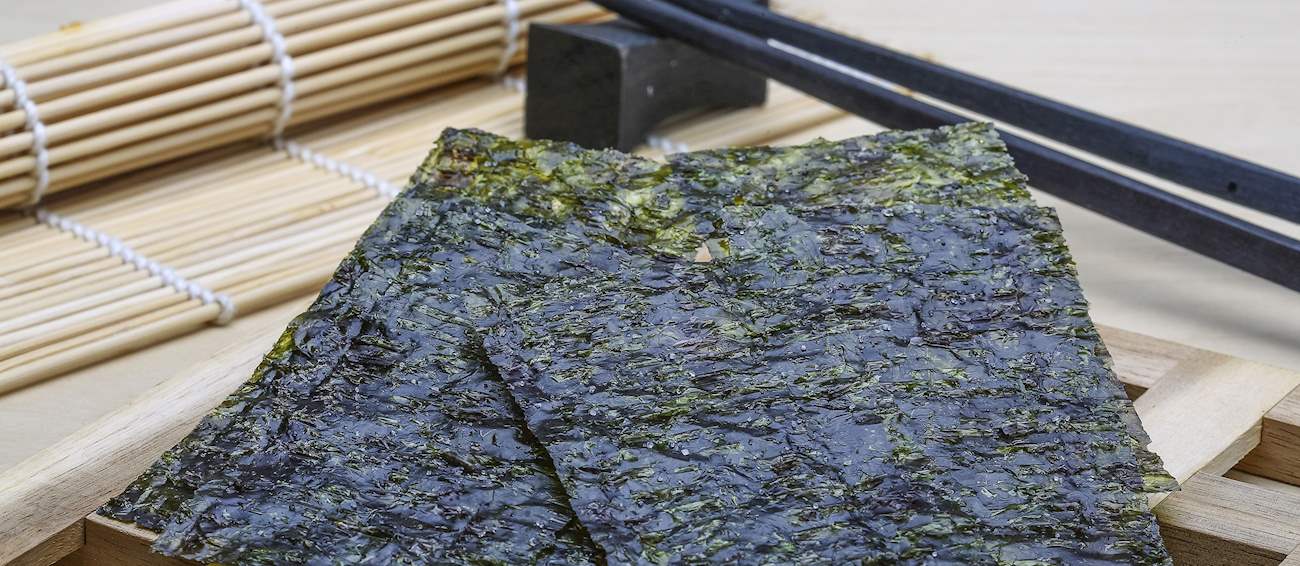Nori
Nori is the traditional Japanese ingredient created out of processed seaweed, more specifically the red algae Porphyra. The production starts with rinsing, draining, and slicing seaweed, which is later pressed and dried to create the rectangular sheets that are thin, flat, and black in color.
Through history, nori was mostly produced out of wild seaweed and was collected at its natural locations. The cultivation started in the 17th century, during the Edo period, when the growth in population increased the demand for nori. Today, it is commercially produced in a specially designed system of nets, where it is cultivated, then processed.
The earliest mention of nori in the Japanese history goes back to 701 AD when it was listed as a means of paying tax. During that period and up until the 18th century, nori was produced differently than today and had the form of a thick paste. Read more
Around 1750, with the art of paper making, the traditional sheet-form nori was created. It remained a popular and easily produced ingredient up until the Second World War. In the aftermath of the war, pollution diminished traditional cultivation methods, creating huge difficulties for Japanese farmers who were not familiar with the scientific process of growing algae.
The British scientist Kathleen Drew-Baker, who studied their Atlantic counterpart, offered the crucial answers which helped the nori industry to be reinvented, grow, and eventually prosper in the second half of the 20th century. Today, dried nori sheets are a staple ingredient in every Japanese household.
They are usually used to wrap sushi or onigiri, or to flavor soups and noodle dishes. Before consumption, nori is typically roasted, allowing the nutty flavors and exceptional aromas to develop. With the growth of sushi popularity and the macrobiotic movement in the 1980s, the versatile nori sheets became recognizable around the world.




